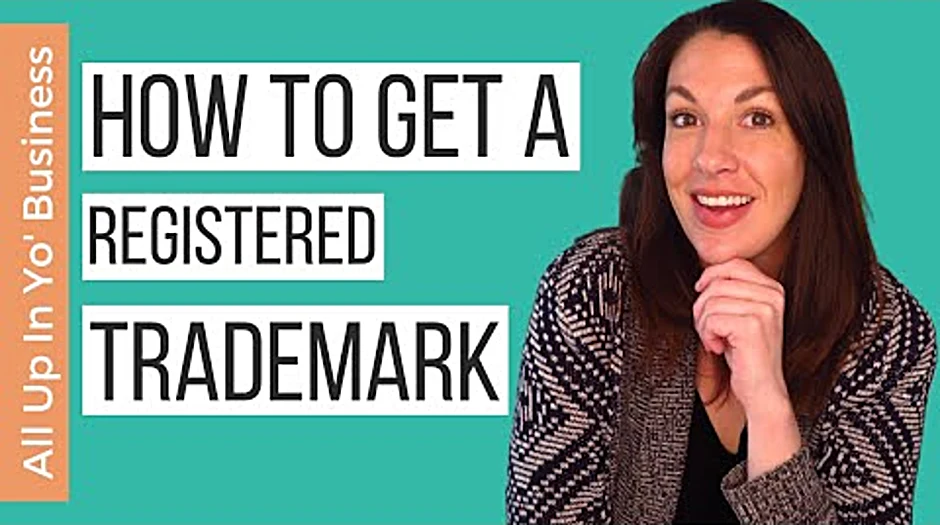Where are trademarks registered [Expert Answers]
Table of Contents
- Where are trademarks located?
- Who can register trademark?
- How do I trademark my company name?
- Can I register my trademark myself?
- Is trademark local or global?
- How long does a trademark last?
- What is international trademark system?
- Can I register a trademark without a company?
- Do I need to trademark my business name?
- Can someone trademark my business name?
- What are the types of trademark?
- Where is trademark registered India?
- Who does a trademark protect?
- Where do trademarks apply?
- Is a registered trademark worldwide?
- How do I register my trademark logo?
- How do you put a registered mark?
- Who gives trademark in India?
- When can a trademark be registered?
- When can a mark be registered?
Last updated : Aug 2, 2022
Written by : Jacquiline Zaleski |
Current |
Write a comment |
Where are trademarks located?
Typically, it is placed in the upper right-hand corner, in the lower right-hand corner, or level with the mark or logo itself—each is an acceptable way of displaying the relevant symbol.
Where is trademark registered India?
The Head Office of the trademark registry is in Mumbai and it has branch offices in Delhi, Ahmedabad, Chennai and Kolkata. When registering a trademark, it is registered under the Trademark Act, 1999 and then the registry of trademarks registers it.
Where do trademarks apply?
Registering for a federal trademark has a number of advantages. Most importantly, it gives you legal ownership of the mark and the exclusive rights to use it anywhere in the nation as it relates to the goods or services you listed during registration.
Is a registered trademark worldwide?
No, a U.S. trademark registration will not protect your trademark in a foreign country. Trademarks are territorial and must be filed in each country where protection is sought.
How do I register my trademark logo?
- Decide on your unique brand name and logo.
- Conduct an online search.
- Fill-in the trademark application.
- Filing for the brand name registration application.
- Scrutinizing of your brand name registration application.
- Publication in Indian Trade Mark Journals.
How do you put a registered mark?
To insert the registered trademark symbol, press Ctrl+Alt+R.
Who gives trademark in India?
The Trade Marks Registry was established in India in 1940 and presently it administers the Trade Marks Act, 1999 and the rules made thereunder. It acts as a resource and information Centre and is a facilitator in matters relating to trademarks in the country.
When can a trademark be registered?
In case no opposition proceedings against the said trademark has been initiated or where an opposition against the said trademark was filed but was decided in favor of the applicant, thereafter the trademark will be registered for a period of 10 years from the date of filing of the application in India and the ...
When can a mark be registered?
The legal requirements to register a trademark under the Act are: The selected mark should be capable of being represented graphically (that is in the paper form). It should be capable of distinguishing the goods or services of one undertaking from those of others.
Who can register trademark?
An Individual (Person) An individual not doing any business is also eligible to file a trademark application and obtain trademark registration for a word or symbol that is proposed to be used by him/her in the future. When filing trademark application as an individual, the full name of the applicant is required.
How do I trademark my company name?
Registering a trademark for a company name is pretty straightforward. Many businesses can file an application online in less than 90 minutes, without a lawyer's help. The simplest way to register is on the U.S. Patent and Trademark Office's Web site, www.uspto.gov.
Can I register my trademark myself?
Any layman who wants to register a trademark can apply himself. But when the practical applicability is considered, appointing an attorney will ease the process to register a trademark. Certain procedures are to be followed to apply for a trademark. An application is filed.
Is trademark local or global?
Local trademarks are the exclusive right of the owner to use the Trademark in a particular market. You do not need to register a trademark again to transfer trademark rights. On the other hand, there are no worldwide or global trademarks.
How long does a trademark last?
A federal trademark lasts 10 years from the date of registration, with 10-year renewal terms. Between the fifth and sixth year after the registration date, the registrant must file an affidavit to state that the mark is still in use.
What is international trademark system?
Madrid System. The Madrid Protocol (Protocol), an international treaty, which has been in force since April 1, 1996 and has become a convenient and economical means of securing trademark registration in member countries.
Can I register a trademark without a company?
Any individual – Indian National or Foreign National can easily register a trademark in India. There is no requirement for forming a legal entity or business entity to register a trademark.
Do I need to trademark my business name?
There's no legal requirement for you to register a trademark. Using a business name can give you 'common law' rights, even without formally registering it.
Can someone trademark my business name?
The short answer is—in theory, yes, but in reality, no. If you don't have a trademark on your name, someone else can research the United States Patent and Trademark Office (USPTO) database and find an available name. They can then trademark it.
What are the types of trademark?
- Product Mark. Product mark is a mark that is used on a good or on a product rather than on a service.
- Service Mark. Service mark is similar to the product mark but a service mark is used to represent a service rather than a product.
- Collective Mark.
- Certification Mark.
- Shape Mark.
- Pattern Mark.
- Sound Mark.
Who does a trademark protect?
A trademark typically protects brand names and logos used on goods and services. A copyright protects an original artistic or literary work. A patent protects an invention.

Check these related keywords for more interesting articles :
Can a trademark be licensed
How to register a brand in germany
How to open a victor patent safe
How to get my patent licensed
United trademark patent services qatar
How to trademark a book title
How to measure brand success
Trademark registration in panipat
Intellectual property lawyer hong kong
How to come up with a trademark name
How to measure brand awareness success
How to write patent specification
How to make brand awareness effective
How to trademark a clothing brand
Why is brand architecture important
Did you find this article relevant to what you were looking for?
Write a comment
Comment by Cameron Perce
hi everyone I'm attorney aid in Durham with 180 lock Oh in Denver Colorado and you're watching all up in your business in this episode of all up in your business we're going to talk about the steps to take to trademark a name a business name or a product or service name and these steps are also going to apply to trademarking a logo but there are a few little differences if you're doing a logo versus trying to trademark a name but first before we get into it huge announcement coming at you March 4th is brandish DIY your trademark application during this one-hour webinar and mini workshop I'm going to teach you step by step how to prepare for complete and submit a trademark application without a lawyer and registration opens soon so if you want to learn the exact steps to take to file a trademark application without a lawyer check the description below for a link to get on the waitlist and to get some special early bird discount opportunities - all right let's talk about how to trademark a name the first step before you go trade marking anything is make sure it's something that's worth trademarking what makes a name more or less worth trade marking it really depends on how strong or weak it is a weak trademark is one that is more generic or common or descriptive versus a strong trademark which is something that's very arbitrary or very distinctive very creative and so the stronger your trademark is the stronger the trademark registration is going to be so if you have a really weak trademark something that typically makes it weak is if it's very descriptive of your goods or your services or if it's primarily your last name something like that makes a trademark on the weaker side and with a weak trademark if you register it all you have is a registered weak trademark and your trademark rights will ruffle to that if you have a weak generic trademark name your rights to enforce that trademark are gonna be somewhat limited and weaker versus if you have a very arbitrary name that's a stronger trademark then your registered trademark rights are gonna be a lot stronger to a few examples of very strong trademarks are like Google Google wasn't even a word until Google came out and created it so any like brand new word or creating a new word creating a new sound combining words to create something new that's the best thing you can do is create a brand new word or a brand new trademark that no one's ever seen before that's gonna make it stronger versus a weaker trademark so if we've decided that it's worth pursuing a trademark registration the next thing we want to do is make sure it's available to even register and use in the US a good first place to start with searching for your trademark availability is of course Google or your favorite search engine type in the trademark that you're looking to register and see what comes up if there's a bunch of other business listings for similar types of products or services if the exact trademark that you want comes up a lot or if there are a lot of similar variations then that might be a little red flag that maybe this trademark has already taken or if it's not taken necessarily registered if there's a lot of competition with that trademark that's going to affect how strong and distinctive your trademark is so if you're seeing a lot of similar variations of your trademark or identical trademarks then you might want to think about how that will impact your registration and then after doing a Google search you can also do a search on the Whois database to see what kind of domain name registrations already exists that incorporate your trademark or something similar to it and then the USP tío has a really good search database available - this allows you to search for pending trademark applications and registered trademarks that might be identical or similar to yours so if you go to the USPTO s website its uspto.gov and you'll navigate to their tests tes s system and this is where you're gonna do that search and you'll usually be able to do just a basic word search for your name now this is where the difference comes in if you're trying to trademark a logo then you'll want to do a design search which is a bit more complicated than just a basic word search so here you can type in the trademark name that you're wanting to use for this example I'm gonna type in all up in your business and then we'll see what comes up so let's say you were wanting to register your trademark all up in your business for your local ice cream shop we see here there is an active live registration for all up in yo business so what's important to note if you do find trademarks that are identical to yours or kind of similar to yours pay attention also to the goods or services that are associated with that registration there are two things primarily that go into trademark applications and trademark registrations the first is the similarity of the trademark itself the second is the similarity of the goods or services so if I'm opening an ice cream shop called all opinio business this current all up in your business registration is for like legal services and things that have absolutely nothing to do with ice cream or ice cream shops so with this finding I am relatively safe feeling like I can proceed with my application because there aren't any that are so similar in trademark and in the goods and services that it's likely it'll get through but if you do find something in the database that is kind of similar to your trademark and goods or services are somewhat related or if they're identical then again that's a red flag that you're going to want to take into consideration and maybe go back to the drawing board because if someone else already has that trademark registered in a very related category of goods or services that's going to impact how your application goes and whether or not you're going to get that registration you can also use some third-party trademark search tools there are companies out there that will do a very thorough trademark search these aren't lawyers or law offices they're just trademark search companies that will search the USPTO and common-law usage and even international usage and then what they'll do is they'll compile all the information and give you typically this very large report summarizing what they found now if you're not a lawyer and you don't know how to actually interpret and analyze those results it may not do you a whole lot of good to pay for that kind of a search but if you can figure out how to analyze what you're looking at then using one of those services for a pretty extensive search is a good idea but really the best option is to use an attorney to help you with this clearance search because the attorney is gonna not only know what to search for but they're also going to understand what they're looking at and they're gonna know how to analyze that in the context of your trademark and determine what it actually means for the fate of your trademark application so if we've determined we want to file the application and the trademark is available the next step is to start using the trademark now ok
Thanks for your comment Cameron Perce, have a nice day.
- Jacquiline Zaleski, Staff Member
Comment by Fetse9
Jeff is a business coach he came up with the name logo and many memorable visuals for his business I don't get it I just don't get it hello trademark factory here how come some brands have a TM symbol next to them and some have an R in a circle symbol what's the difference which one should I use once you've decided to use a particular brand for your business start putting the TM symbol next to it oh that's simple what the TM symbol says to the public is that you're using this logo name or tagline as your trademark in fact this means that you yourself think that it is your trademark well I certainly think that it actually has an added advantage because a lot of people don't know trademark laws and think there is something more required from a business owner before they can place the TM sign next to their trademark customers may take you more seriously even though all you had to do was insert an extra character in all of your branding and marketing materials do you mean I can just place it next to my names and logos just like that yes and I don't need you to do anything for me nope you can do it yourself and I don't need to pay anything to anybody to do it nope just go ahead and do it then what does the R and a circle mean this means that the trademark is registered while the TM sign means that you yourself think that it is your trademark the are in the circle sign means that you yourself think that it is your trademark and the government agrees well my trademarks are not registered can I still use the AR and circle symbol no you may run into a lot of trouble if you do especially in the United States thank you you
Thanks Fetse9 your participation is very much appreciated
- Jacquiline Zaleski
About the author

Jacquiline Zaleski
I've studied cheminformatics at Vermont Law School in South Royalton and I am an expert in sports coaching. I usually feel gloomy. My previous job was order clerk I held this position for 17 years, I love talking about aerospace and drumming. Huge fan of Khlo+� Kardashian I practice wrestling: greco-roman and collect fossils.
Try Not to laugh !
Joke resides here...
Tags
Who can register trademark
How do I trademark my company name
Can I register my trademark myself
Is trademark local or global
How long does a trademark last
What is international trademark system
Can I register a trademark without a company
Do I need to trademark my business name
Can someone trademark my business name
What are the types of trademark
Where is trademark registered India
Who does a trademark protect
Where do trademarks apply
Is a registered trademark worldwide
How do I register my trademark logo
How do you put a registered mark
Who gives trademark in India
When can a trademark be registered
When can a mark be registered
 : 9336
: 9336

